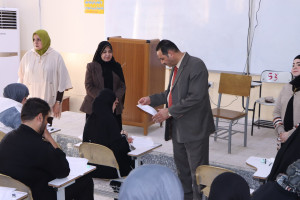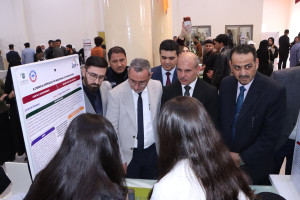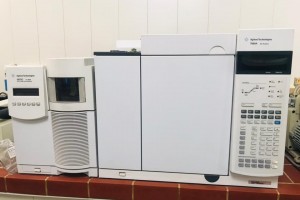
A master’s thesis was discussed at the College of Education for Pure Sciences at the University of Basra on (the effect of pollutants on some types of invertebrates in the Al-Khoora River in Basra Governorate / Iraq)
The thesis presented by the researcher (Yousra Hassan Ali) included an introduction to the importance of the Shatt al-Arab, as it is an important navigation port connecting Iraq to the world, and it is the main artery for water in southern Iraq, and many rivers and sub-channels connect to the Shatt al-Arab, including the Al-Khora Canal, and that the quality of the water coming from these rivers and canals It affects the water specifications in the Shatt al-Arab and is one of the reasons for the increase in water pollution in it. Water pollution is nowadays at the forefront of the main problems that threaten the environment and its safety, as the sources of pollution associated with various human activities and practices that are inappropriate for humans have increased, especially the discharge of pollutants of their chemical, physical and biological types into rivers.
The study aimed to measure some physical and chemical properties and concentrations of some heavy metals in the water of Al-Khoora Canal, and to determine the density of some types of ringworms and snails, as well as to study the effect of pollutants on the density of ringworms and snails in the study stations.
The study concluded that the indicators of pollution in the Al-Khora Canal were higher compared to the waters of the Shatt Al-Arab, as the sewage and waste discharged in the canal had an effect on the physical and chemical factors and the concentrations of heavy metals in the water. The presence of Tubifex tubifex worms in the canal is evidence of an increase in organic pollution in the canal, resulting from the discharge of sewage and industrial and agricultural waste. The snail Melanoides tuberculata recorded the highest density among the other species recorded in all study stations, and this indicates that it tolerated a wide range of variability in physical and chemical factors. The physical and chemical factors and the concentration of heavy metals also showed a clear effect on the density of ringworms and gastropods.
The study recommended the necessity of spreading environmental awareness among citizens to define the negative effects of waste disposal in the aquatic environment, and the risks of environmental pollution on humans and all components of the environment. And the necessity of linking the informal housing units (squatters) scattered along the Al-Khoora Canal to the main sewage network to reduce the dumping of untreated polluted water into the canal. The study also recommended conducting studies to detect some other pollutants in the area under study, such as pesticides, petroleum hydrocarbons, and pharmaceutical compounds and their impact on the aquatic environment.








